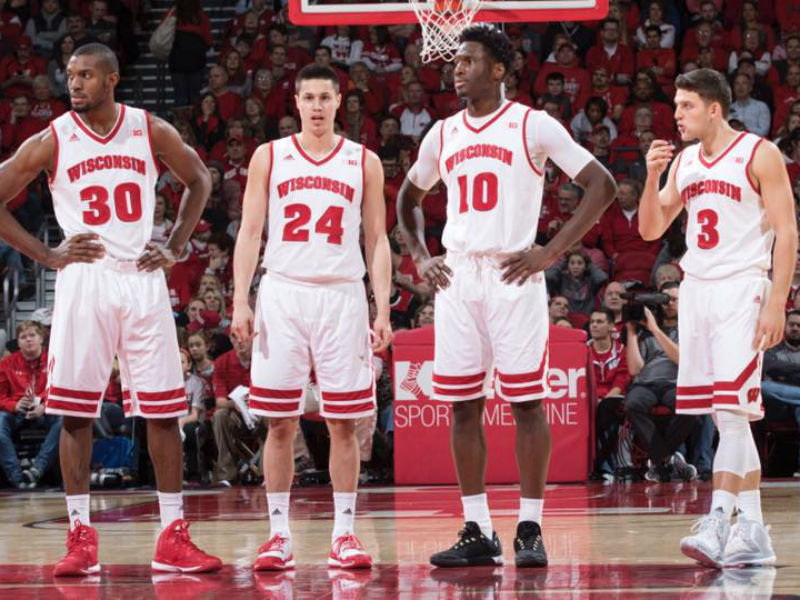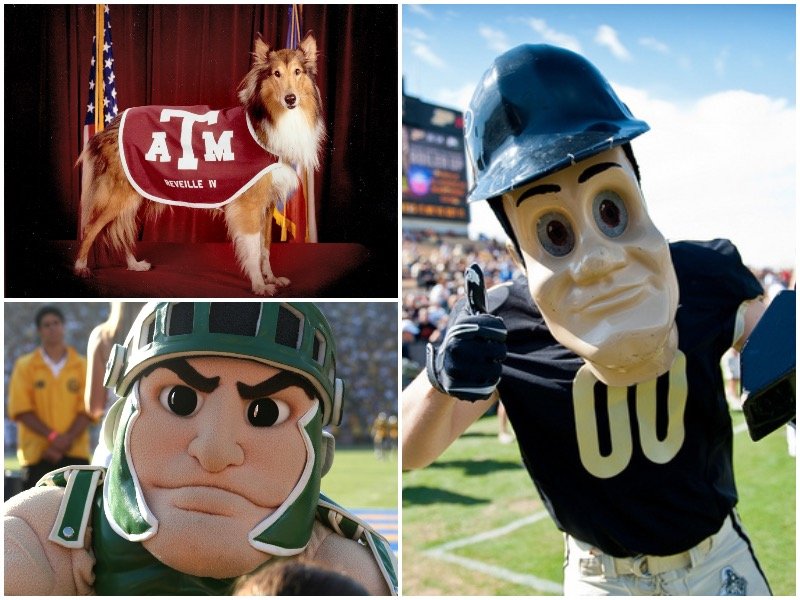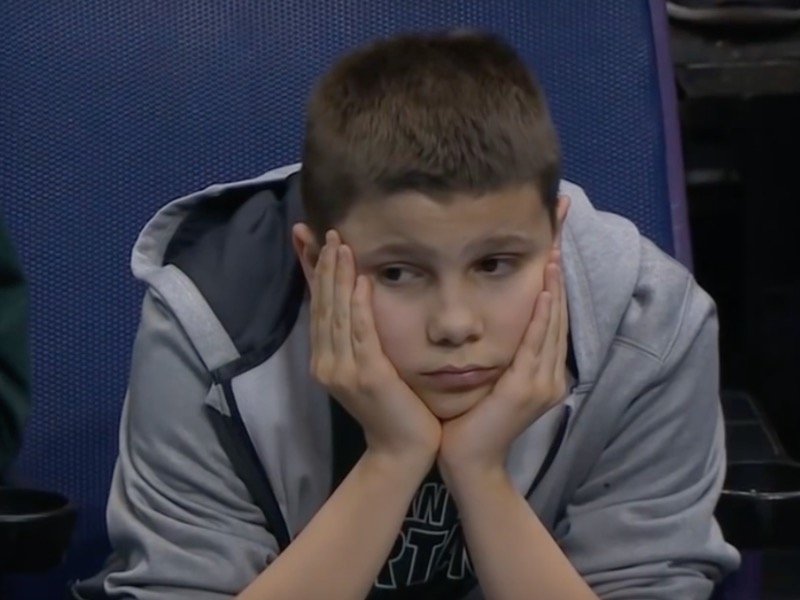The NCAA Tournament selection committee didn’t wait for the actual games to begin to commence with March Madness. And for the state’s two participants, Wisconsin and Marquette, the outcomes were neither comprehensible nor ideal.
The Badgers (25-9, 12-6 in the Big Ten) earned the East Region’s No. 8 seed and will face No. 9 Virginia Tech in Buffalo, N.Y.; the Golden Eagles got the East’s No. 10 seed and will face seventh-seeded South Carolina in Greenville, S.C. Meanwhile, in Milwaukee, the BMO Harris Bradley Center will host four games and eight teams, including Minnesota and Purdue, in the first round.
Let’s try to make sense of all this.
The Badgers were one of seven Big Ten teams that made the NCAA Tournament, but the conference’s seedings were pretty hard to understand. Wisconsin, which finished tied for second place in the Big Ten regular-season standings and was the runner-up in the conference tournament, earned a No. 8 seed. Purdue got a No. 4 seed, Minnesota a No. 5, Maryland a No. 6, Michigan a No. 7, Northwestern a No. 8 seed – the Wildcats are in the tourney for the first time in program history – and Michigan State a No. 9.
Putting aside the fourth-seeded Boilermakers (25-7, 14-4), who were the Big Ten regular-season champions and possessed the league’s best RPI but had the same number of wins as the Badgers and lost in the quarterfinals of the conference tournament, what was weird about Wisconsin’s placement?
Well, for starters, the Badgers beat Minnesota twice by a combined 19 points, finished ahead of the Gophers (24-9, 11-7) in the Big Ten standings and advanced further than them in the conference tournament. Minnesota being seeded three spots higher is pretty startling, even accounting for the Gophers’ better RPI (ranked 20th in the country, compared to the Badgers’ 36th) and late-season run of eight wins in their last nine games.
But RPI is not a holy grail, it’s a reflection of the games played and results and the statistical variances are miniscule compared to the seed differences. Minnesota’s RPI was .612 and Wisconsin’s was .597; is fifteen-tenths worth a three-seed difference?
What about Maryland (24-8, 12-6), which tied for second in the Big Ten during the regular season and lost to Northwestern in the quarterfinals of the tournament? The Badgers beat the Terrapins, 71-60, in their only matchup and were just two places behind 34th-ranked Maryland in RPI. Like Wisconsin, Maryland struggled down the stretch, losing six of its last 10 games. Those credentials don’t feel worthy of a two-seed difference.
Then there’s Michigan (24-11, 10-8), which tied for fourth in the Big Ten but won seven of its final eight games en route to surprisingly capturing the league tournament title – as an eight seed and despite a plane crash – with a victory over Wisconsin. The Wolverines had the third-best RPI in the conference (25th nationally), but split their regular-season matchups with the Badgers. That would feel like recency bias over body of work. The Big Ten Tournament championship game on Sunday always runs right up against the start of the Selection Show, and it's possible the committee already had two spots saved for the conference, a No. 7 and No. 8, with the winner simply getting the higher seed.
And as for Northwestern (23-11, 10-8), the Wildcats beat the Badgers in Madison a month ago but were routed by them in the Big Ten Tournament on Saturday and finished tied for fourth in the conference standings and with the league’s seventh-best RPI (51st nationally). Again, it’s hard to figure out what Wisconsin was being punished for, though a weak Big Ten with lots of parity probably complicated things.
The ultimate tourney regulars, the Badgers have made the NCAA Tournament every year since 1999, and they are the only team to reach the Sweet 16 in each of the last three seasons. With an upperclassmen-heavy starting lineup, including postseason veterans Nigel Hayes and Bronson Koenig, as well as talented two-way big man Ethan Happ, the defensively strong Badgers could surprise some people – as long as they make some shots and don’t go cold for extended periods of time on offense.
Ranking 24th in the AP Top 25 poll, Wisconsin’s No. 8 NCAA tourney seed is its lowest since 2009, but the inferior position doesn’t seem entirely warranted this season. Making matters worse, if the Badgers beat Buzz Williams’ Hokies on Thursday, they’d likely face Villanova, the No. 1 overall seed in the tournament and the nation’s top-ranked team. Tough luck for Wisconsin.
Moving on to Marquette, the Golden Eagles, who hadn’t made the tournament since 2013, were just happy to hear their name called again. In head coach Steve Wojciechowski’s third season, Marquette went 19-12, including 10-8 in the Big East, which tied for third place in the league. The team lost in the quarterfinals of the conference tournament.
Apparently, the selection committee rewarded its big wins – including an upset over No. 1 Villanova in January and two victories over sixth-seeded Creighton – despite its inconsistent mediocrity. After knocking off the Wildcats, the Golden Eagles finished the regular season 5-5 and had the conference’s seventh-best – or fourth-worst – RPI (61st overall). But other advanced metrics were more kind to Marquette, as it was 28th in KenPom rankings and 29th in BPI.
Evidenced by their jubilant reaction watching the Selection Show on Sunday, the Golden Eagles were thrilled to be in the NCAA Tournament. But they got an unkind draw, playing No. 7 seed South Carolina in Greenville, which is just 100 miles from the Gamecocks’ campus, making it as close to a home game as any in the tourney. If Marquette – a hot-shooting, defense-indifferent squad – gets past South Carolina, it would then probably face No. 2 Duke, which is only a few hours from Greenville. Making the tournament is a great accomplishment, but the geography of the Golden Eagles’ placement does them no favors.
Marquette has upset potential, at least in the first round, exclusively because of its three-point shooting. Making 43 percent of their long-range attempts this season, the Golden Eagles were the best in the nation from outside the arc. They live and die by the three, which could make them a dangerous bunch during the chaotic first couple rounds of the tournament, but they are also liable to go cold – as they’ve done in a few games this year – and struggle on defense. With sharpshooters like Andrew Rowsey, Katin Reinhardt, Markus Howard and Sam Hauser – plus low-post presence Luke Fischer – Marquette has the personnel to potentially make some noise.
In Milwaukee, the BMO Harris Bradley Center will again host games in the first and second rounds of the NCAA Tournament, this year in the Midwest Region and the South Region, March 16 and 18. In the first round, on Thursday, No. 5 Iowa State (23-10) will face No. 12 Nevada (28-6) and No. 4 Purdue (25-7) takes on No. 13 Vermont (29-5) in the Midwest Region, while No. 5 Minnesota (24-9) will play No. 12 Middle Tennessee (30-4) and No. 4 Butler (23-8) faces No. 13 Winthrop (26-6) in the South Region. The second-round games will take place Saturday. Ticket information is available here.
Born in Milwaukee but a product of Shorewood High School (go ‘Hounds!) and Northwestern University (go ‘Cats!), Jimmy never knew the schoolboy bliss of cheering for a winning football, basketball or baseball team. So he ditched being a fan in order to cover sports professionally - occasionally objectively, always passionately. He's lived in Chicago, New York and Dallas, but now resides again in his beloved Brew City and is an ardent attacker of the notorious Milwaukee Inferiority Complex.
After interning at print publications like Birds and Blooms (official motto: "America's #1 backyard birding and gardening magazine!"), Sports Illustrated (unofficial motto: "Subscribe and save up to 90% off the cover price!") and The Dallas Morning News (a newspaper!), Jimmy worked for web outlets like CBSSports.com, where he was a Packers beat reporter, and FOX Sports Wisconsin, where he managed digital content. He's a proponent and frequent user of em dashes, parenthetical asides, descriptive appositives and, really, anything that makes his sentences longer and more needlessly complex.
Jimmy appreciates references to late '90s Brewers and Bucks players and is the curator of the unofficial John Jaha Hall of Fame. He also enjoys running, biking and soccer, but isn't too annoying about them. He writes about sports - both mainstream and unconventional - and non-sports, including history, music, food, art and even golf (just kidding!), and welcomes reader suggestions for off-the-beaten-path story ideas.







